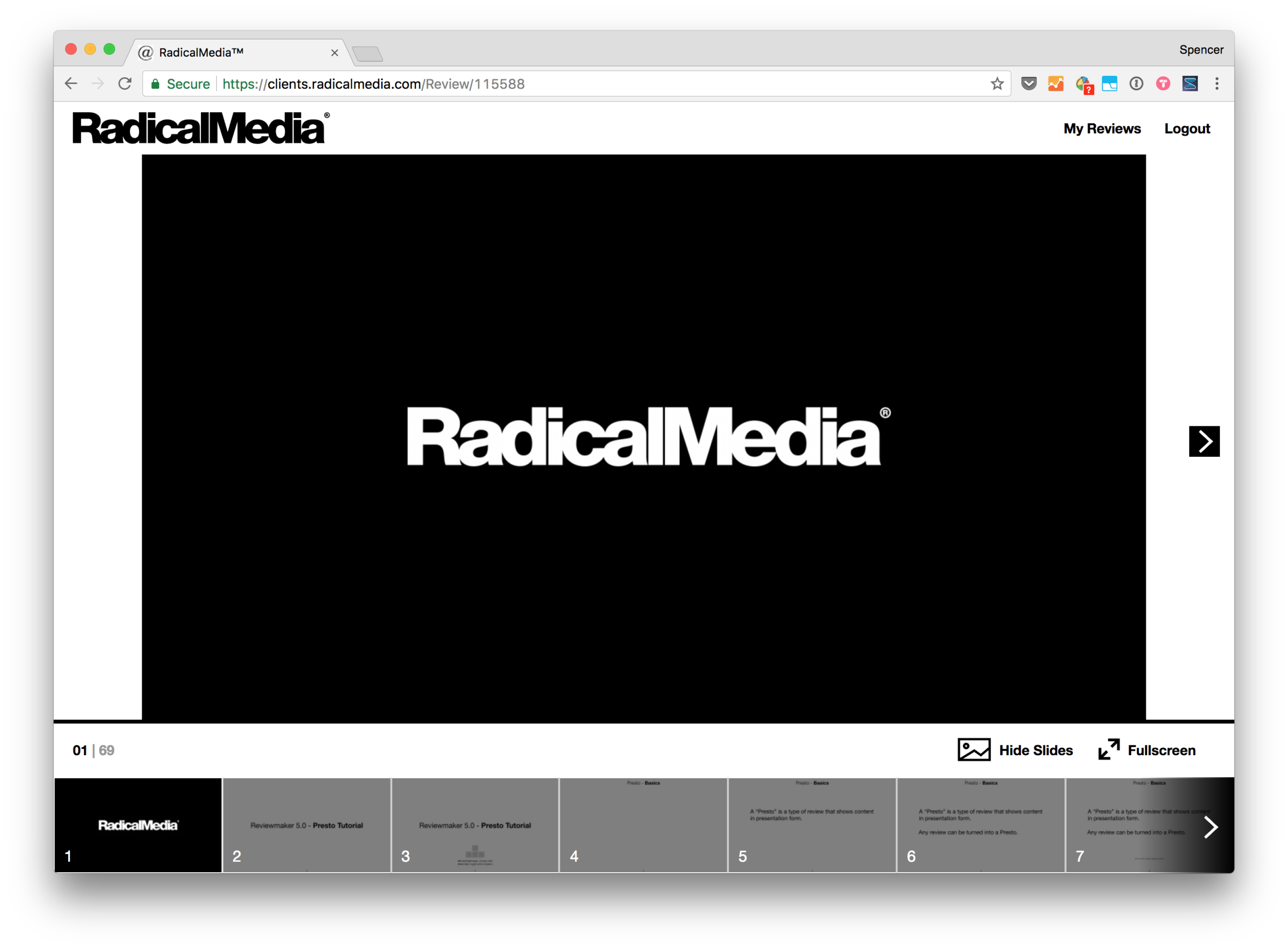Presto: Remote PResentation Tool
LAMP, Javascript, LESS, Node.js with Socket.io
I was tasked with building a presentation tool to replace / accompany WebX and Skype. The tool presents images and videos in a presentation format. Prestos can be either self-guided or hosted; hosted prestos use WebSockets to allow a host user to control the content that is displayed in the viewer users' browser.
1. Responsibilities:
- Developed Presto web app and Node.js WebSocket server. Determined the user flow and logic tree, building out the appropriate socket messages. Ensured smart media loading in order to reduce loading times and keep all viewers in sync.
2. Takeaways:
- I learned how to build a WebSocket server with Socket.io
- I decided to use WebSockets and the Socket.io library because it allowed us to easily track multiple hosted prestos at a time with its built-in rooms and channels. It also has built-in protocols for dealing with an interrupted internet connection and older browsers, which made the testing process much more straightforward.
- The library also made it very easy to track an events based experience such as a presentation. We used the high-resolution of our socket messages to track analytics about the viewers, such as slides loading and video buffers, and provide that to the presto host in real-time.
- I lead the development of the software, from initial concept through on-going upgrade
- I set milestones and goals, collaborating with key stakeholders to create a satisfactory product.
- I worked with our potential users to define a feature set. There are many edge-cases for a hosted presto – what if the host scrubs forward to 1:10 in her video but the viewer Jason is on a weak internet connection and is still buffering – and it took a while to ensure that we are accounting for the possible occurrences.
- This web app is used in client presentations, so I maintain an open lane of communication with key stakeholders to ensure that Presto is a satisfying tool.
Hosted Prestos:
Hosted prestos enable users to give remote, media-heavy presentations where the content is loaded natively in the viewer's browser instead of being sent as a screen capture over Skype. Using WebSockets, the host can control which slide the viewer sees as well as control where they are in any video slides.
We are currently in the process of expanding the data that we track about the viewer in a presentation (view time, buffer times, slide load errors).
Self-Guided Prestos and Security:
Any self-guided presto can be turned into a hosted presto, and vice-versa, with a simple checkbox in the settings panel. This makes it easy to provide viewers with copy of the presto after a hosted session. In a self-guided presto, each viewer can view the presto at their own pace.
One of the main benefits of presto is added security. Since we are provided the presto instead of sending over a PDF it means that we can invalidate the presto link whenever necessary as well as track who views the presto.
In the future we will also add the ability to watermark files as they come down to the browser, allowing easier investigation of leaks.

